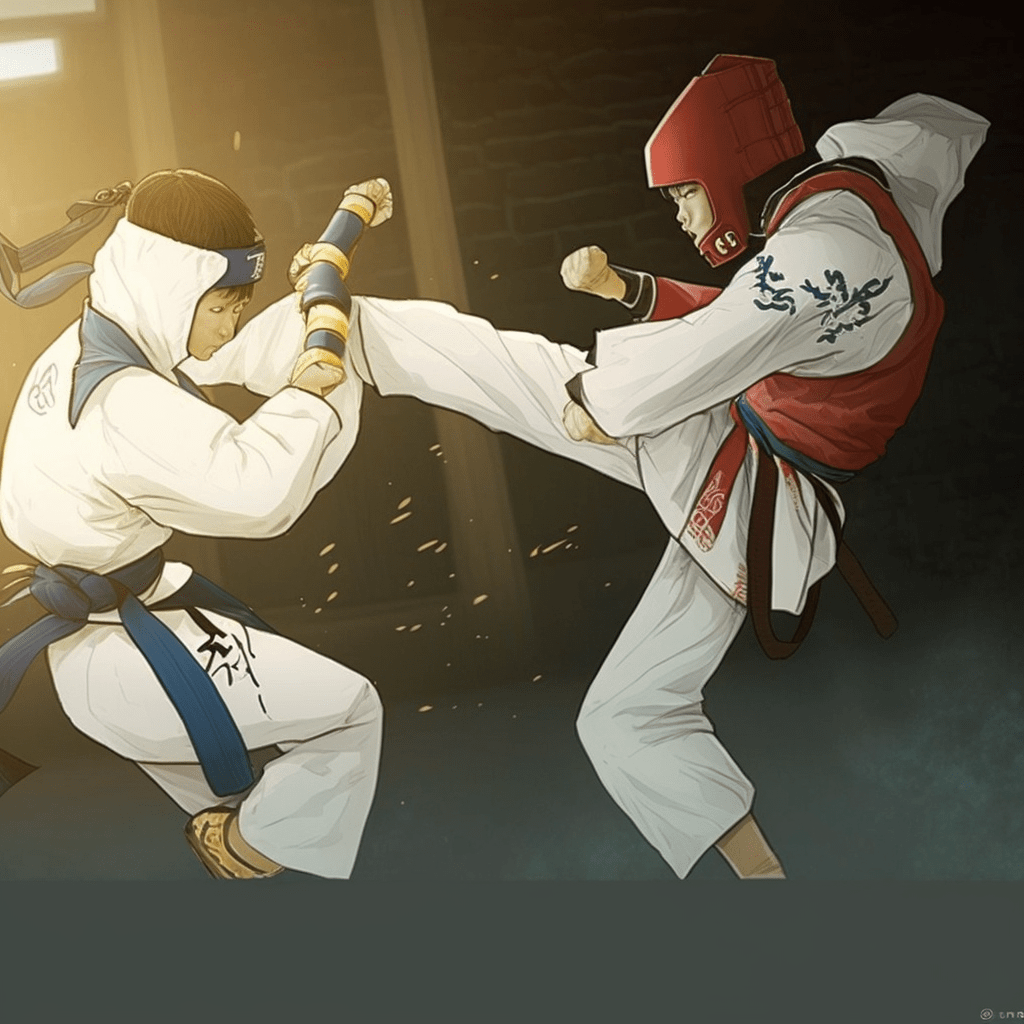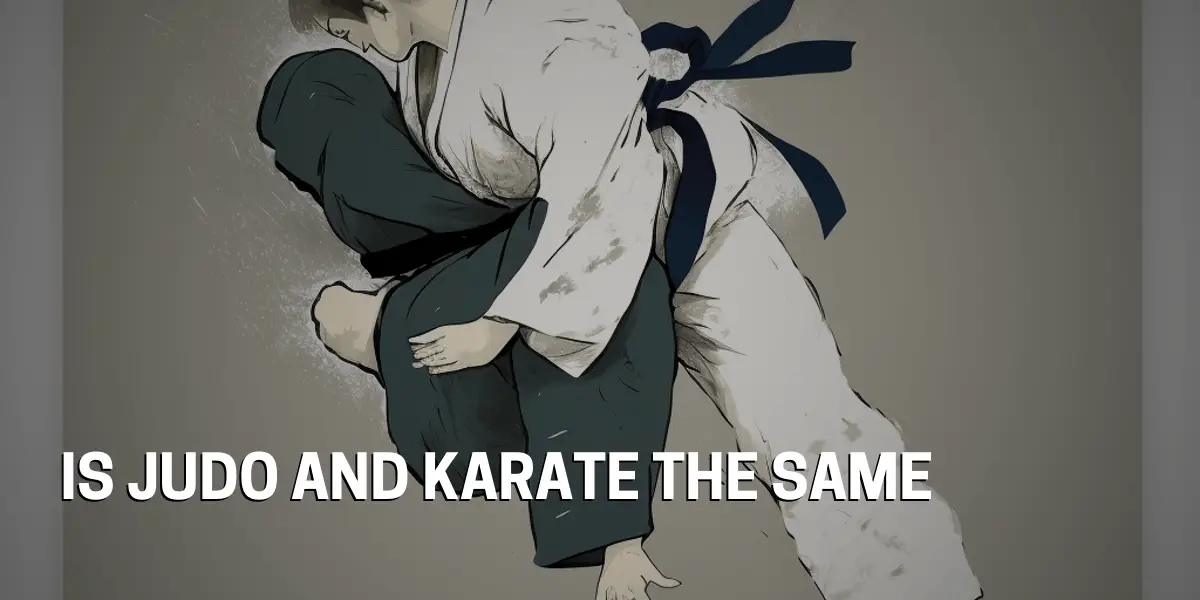Is Judo the Same as Karate?
Many martial arts enthusiasts often wonder if Judo and Karate are the same. Although these two martial arts may seem similar, they actually have quite a few differences. Judo is a martial art based on throws and joint-locks, while Karate is a striking martial art. While both martial arts share some principles, they are distinct and unique from one another.
Judo is a form of martial art that was developed in Japan. It involves using throws and joint-locks to control and defeat an opponent. Judo is based on the principle of using an opponent’s strength and momentum against them, rather than relying on one’s own strength.
Karate, on the other hand, is a striking martial art that originated in Okinawa, Japan. It utilizes punches, kicks, and strikes to create distance, control, and ultimately defeat an opponent. Karate emphasizes proper form, balance, and control.
While Judo and Karate may appear to be the same, they are actually two distinct martial arts. While they share some similar principles, the focus and techniques of each are notably different.

Origin
It is an age-old question that has been asked by martial arts enthusiasts for generations: are Judo and Karate the same? The answer is no. While they share some similar principles and techniques, they are distinct and unique.
Judo is a form of martial art that was developed in Japan in the late 19th century as a form of physical and mental training. It involves using throws and joint-locks to control and defeat an opponent.
Karate, on the other hand, is a striking martial art that originated in Okinawa, Japan in the 14th century as a form of self-defense. It utilizes punches, kicks, and strikes to create distance, control, and ultimately defeat an opponent.
Both martial arts also practice kata, which is a series of pre-arranged forms or techniques used to practice and remember techniques.
Techniques
This has been an age-old debate among martial arts enthusiasts. Do Judo and Karate have the same elements? The answer is no. While they share some similar techniques, Judo and Karate are distinct and unique.
Judo is a form of martial art that was developed in Japan in the late 19th century for physical and mental training. It involves using throws and joint-locks to control and defeat an opponent. Karate, on the other hand, is a striking martial art that has its origins in Okinawa, Japan in the 14th century. It utilizes punches, kicks, and strikes to create distance, control, and ultimately take down an opponent.
When it comes to the techniques used in Judo and Karate, they have some similarities. Both involve throws, holds, kicks, punches, and blocks. However, the focus of each martial art is quite different. Judo focuses on throws and grappling techniques while Karate emphasizes striking and blocking techniques.
Judo uses leverage and momentum to control opponents while Karate relies on speed and power to deliver strikes and blocks. The techniques in Judo are more fluid and dynamic while in Karate they are more direct and fixed. The difference in focus and techniques gives each martial art its own unique style and approach.
Striking
Striking is an essential element in both Judo and Karate. Judo utilizes strikes as a means of distraction before attempting a takedown. Karate focuses heavily on striking as a primary offense. Judo strikes are often used in combination with throws and locks, to destabilize an opponent. Karate strikes, on the other hand, are typically open-handed techniques, such as punches, kicks, and blocks. Both use striking as a way to create distance, control, and ultimately take down an opponent.
Throwing
Throwing is a key component of both Judo and Karate, and is used in different ways. In Judo, the primary aim is to throw the opponent to the ground and gain points by doing so.
In Karate, throwing is used to gain an advantageous position and can be used to control the situation. Proper technique and timing is emphasized in both martial arts when executing throws, making them an essential part of the training.

Grappling
At the core of both is the practice of grappling, which is used to control an opponent and take them to the ground. Judo focuses on throws and pins, as well as the technique and timing involved in executing them, while Karate emphasizes strikes and kicks.
Both martial arts teach practitioners how to defend themselves in close combat. This is an important skill to master when it comes to self-defense.
Uniforms
When discussing the similarities and differences between Judo and Karate, uniforms are a key point of distinction. Both martial arts require a loose-fitting top and pants, but the similarities end there. Judo requires the use of headgear for competitions, while Karate does not.
Additionally, the colors of the uniforms provide an easy way to distinguish between the two. Judo uniforms are typically white, while Karate uniforms can come in a range of colors. The belts are also a helpful indicator, as Judo practitioners wear a colored belt to denote rank, while Karate practitioners wear a black belt.
Benefits
Physical benefits of Judo include increased strength, coordination, and flexibility. Judo also provides an excellent way to stay fit and healthy.
Additionally, Judo can help increase self-confidence and improve balance. Karate, on the other hand, has a variety of physical benefits such as improved coordination, improved reflexes, and increased strength.
Both Judo and Karate offer a range of mental benefits as well. Judo can help to improve focus, concentration, and problem-solving skills. Additionally, it can help to build self-confidence and increase self-awareness.
Karate can help to build self-discipline, confidence, and respect. It can also be a great way to reduce stress and improve mental clarity.
Examples
When it comes to physical benefits, Judo offers increased strength, coordination, and flexibility. It is also an excellent way to stay fit and healthy.
Additionally, Judo can help to increase self-confidence and improve balance.
On the other hand, Karate provides improved coordination, reflexes, and strength. It can also be beneficial for self-defense and developing discipline.
Mentally, Judo can help to improve focus, concentration, and problem-solving skills. It can also help to build self-confidence and increase self-awareness.
Karate, on the other hand, can help to build self-discipline, confidence, and respect. It can also be a great way to reduce stress and improve mental clarity.
Overall, Judo and Karate offer a range of mental and physical benefits that can be beneficial for both adults and children.
When it comes to choosing between Judo and Karate, it is important to consider which style best suits your needs and goals.

Comparison
Are Judo and Karate equal? A common question among martial arts enthusiasts is whether Judo and Karate are equal in terms of their techniques and strategies. The answer is far from simple, as both styles have their own unique approach.
Judo is primarily a grappling style, focusing on throws and submissions, while Karate is a striking style, emphasizing kicks, punches, and blocks. Judo has an emphasis on self-defense, while Karate is more suited to competition and sport.
Both styles require physical strength and athleticism, and each provides different benefits. Judo helps to increase strength, flexibility, and balance, while Karate is great for improving coordination, reflexes, and discipline.
Additionally, both martial arts offer mental benefits such as improved focus, concentration, and problem-solving skills.
FAQs
What is the difference between judo and karate?
In the martial arts world, judo and karate are two of the most popular styles. While both styles are derived from the same martial arts principles, they each have their own unique techniques and strategies. Judo focuses on throws, holds, and submissions, while karate focuses on punches, kicks, and striking techniques.
Judo emphasizes joint locks, control, and balance, while karate emphasizes power, speed, and agility. Judo is primarily a ground-based martial art, while karate is a standing martial art.
While the techniques used by both styles may seem similar, there are distinct differences between them that make one more suitable for certain situations than the other. Judo is widely seen as the more effective style for self-defense, while karate is more suited for competitive and sport applications.
With the right instruction and dedication, practitioners of either style can develop the skills needed to be successful in their chosen art.
Is judo or karate more effective for self defense?
We’ve all asked ourselves: Is judo or karate more effective for self defense? Both martial arts have their own unique techniques, yet the differences between them can be the deciding factor when it comes to the best choice for self-defense.
Judo relies on joint locks, throws, and submission techniques to control an attacker; karate utilizes punches, kicks, and blocks to incapacitate an attacker. It’s important to consider the individual’s physical and mental abilities, as well as their goals and environment, to determine which martial art is more suited for self-defense.

What are the similarities between judo and karate?
The question of whether judo and karate have the same meaning is a complex one. On the surface, they may appear to be similar, but they have some key differences that set them apart.
Judo and karate both originate from Japan and share many of the same core philosophies, such as physical conditioning, self-discipline, and the mastery of techniques. However, the two martial arts differ in the way they are practiced.
Judo focuses on using throws, joint locks, and submissions to defend against opponents, while karate emphasizes the use of punches, kicks, and blocks. These differences can be the deciding factor when it comes to choosing the best martial art for self-defense.
In addition, the individual’s physical and mental abilities, as well as their goals and environment, must be taken into consideration when deciding which martial art is best for them.
Are karate and judo suitable for children?
When it comes to deciding whether judo and karate are suitable for children, there are a few key points to consider. Both martial arts can be beneficial for children in terms of physical and mental development, but it is vital that the teaching style is appropriate.
Parents should also ensure that their child is supervised properly while participating in these activities. It is important to note that the individual’s physical and mental abilities, as well as their goals and environment, should all be taken into account when deciding which martial art is best for them.
Ultimately, making an informed decision about which martial art is most suitable for a child requires understanding the differences between judo and karate.
Are judo and karate Olympic sports?
In recent years, the question of whether judo and karate are part of the Olympic program has become increasingly common. While both martial arts were traditionally seen as separate entities, they have since been recognized as Olympic sports. Judo was added as an Olympic sport in 1964, with karate following in 2020.
Judo focuses on grappling while karate emphasizes striking. Both are represented in various global and regional tournaments, offering unique features and benefits. Competitors should also consider their own physical and mental abilities, goals, and environment when making their selection.
Conclusion
It is a common misconception that Judo and Karate are the same martial art. Both Judo and Karate are Japanese martial arts, originating in the same country and sharing many of the same values. However, they are two distinct martial arts, with their own unique histories, techniques, and philosophies.
Judo is a grappling-based martial art, focusing on throws and submissions, while Karate is a striking-based art, emphasizing blocks and strikes. As such, practitioners of each art can benefit from the physical and mental aspects of their respective martial arts, as well as the discipline and respect that is required to practice them.

